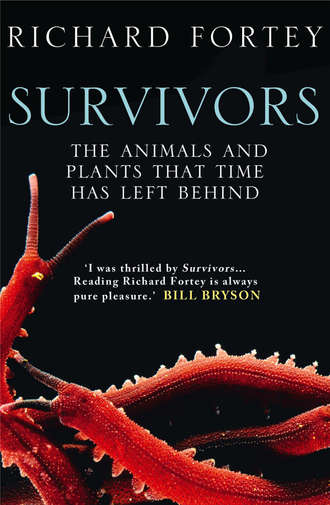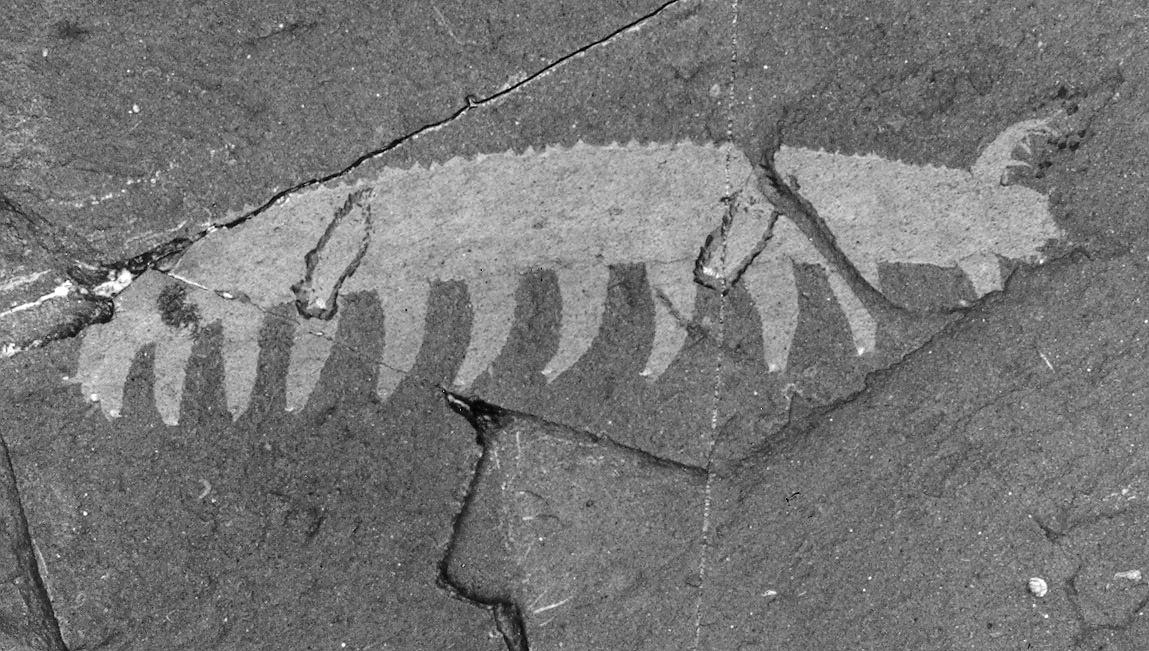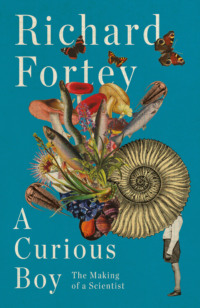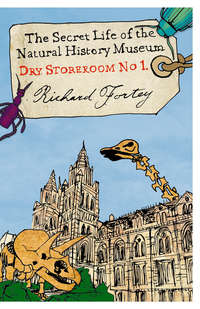
Полная версия
Survivors: The Animals and Plants that Time has Left Behind
New Zealand took away its package of Gondwanan plants as the continent broke up. Later, it was colonised by birds, and they evolved in isolation to produce a host of endemic species. Some are almost comical, like the kakapo, a ground parrot of remarkable stupidity (and now a threatened species), and the kea, a mountain parrot of legendary intelligence and a fondness for eating the windscreen wipers of cars exploring the Alps. It is said that keas can be found solving crossword puzzles left behind by tourists. Other birds became intimately involved with perpetuating the podocarp forest by swallowing and distributing their seeds. Some still remain, singing sweet songs high in the canopies of the stately stands that survive. Many scientists believe that at some stage in New Zealand history the sea level rose to a point where mammal species could not endure and breed. Today, it has no endemic terrestrial mammals. Whatever happened, nobody could question the fact that this antipodean island represents the acme of avian evolution in the absence of serious mammalian competitors. The loss of the ability to fly is common – why bother to take to the air when you can safely amble about in the bush? The kiwi is the amiable emblem of the country; a variety of kiwi species show the fecundity of this ground-dwelling option. None is safe for the future. The largest flightless bird that ever lived, the moa, lived in huge numbers in New Zealand. A Brobdingnagian ostrich, it was meat on legs for the first human invaders, who undoubtedly hastened its extinction.* In the Karamea forest I see the dark entrance to cave systems perforating Honeycomb Hill from which dozens of moa bones have been recovered, and marvel at a sudden vision of an island swarming with the giant birds. If only we could turn back the clock. So many New Zealand bird species are either extinct or threatened. The new generation of New Zealanders are almost neurotically aware of what human interference has done to the natural environment. The introduction of the possum from Australia was a particular disaster, since these aggressive vegetarians seem to particularly relish New Zealand tree flowers. They threaten the livelihoods of all the nectar sippers and honey eaters among the bird species. The restocking of offshore islands with native birds in a rat-free, possum-free and cat-free environment seems to be the best option at the moment. It is at best a despairing attempt to store away from further trouble a remarkable history running into millions of years.
I have to understand New Zealand’s long history before my search for an animal that has survived from a period even earlier than the first appearance of the horseshoe crabs. My quarry is the velvet worm. This creature will help us climb downwards to a still lower branch of the evolutionary tree. George Gibbs from the University of Wellington is my guide. He knows the secretive ways of these elusive animals. We drive out along Route 1, west of Wellington on the southern edge of the North Island, prior to walking up the Akatara Ridge along a small country track. The whole area was milled in the 1930s and 1940s so the mature podocarp forest has all gone, but there is secondary growth of tree ferns and rimu and Protea in a dense thicket. Some of the common native birds have adapted to the new circumstances. We hear the distinctive whistle and churr of the tui as we park the car. New Zealand birds usually have a distinctive and attractive song, even those that are unspectacular to look at. As we walk up the track I notice another survivor, the lowly herb Lycopodium, growing on the bank, a plant we shall meet again. It is a steady climb, though hardly taxing. Towards the top of the track the landscape opens out into gently rolling, wooded farmland. A scattering of cows and white sheep graze on the cleared, grassy hillsides, and dotted among them are Californian pines. The wind blows through the trees with a sound like the gentle crash of waves. The ‘old homestead’ proves to be an antique wooden building in the bottom of a small hollow surrounded by a circle of ageing pine trees. George locates the bleached remnants of rotten pine logs lying on the ground nearby. For some reason they had not been tidied away after felling, so they have had the opportunity slowly to break down in situ. Selecting one log, it soon becomes apparent that inside its pale exterior the decaying wood is rusty red and fibrous. George starts beating at it with a small mattock brought along especially for the purpose. I cannot help leaning expectantly over his shoulder. Each hack of the instrument beats away ten million years of geological time. Can the velvet worm be hiding inside this curious sarcophagus? Where is its time capsule?
But the first log yields nothing. A second log is soon under attack. It seems softer somehow, more decayed. As the wood splits easily apart tiny white termites are exposed to the air, looking something like pallid ants, almost transparently delicate. They move slowly, as if stunned by being exposed suddenly to bright light: they are creatures of habitual darkness. Their little antennae can be seen waving furiously. Termites are wood eaters hiding deep inside the log, living in chambers they make running along its ‘grain’. We had opened up their secret world. And then we see there’s something else, something caterpillar-like, hiding in the termites’ tunnels. It shrinks away as if it does not want to be seen, or as if light is somehow an embarrassment to it. George coaxes it expertly into full view: it’s the velvet worm!
This is the creature we had come all this way to find: Peripatus novae-zealandiae to give it its scientific name. Because it does not move very fast, it proves relatively easy to catch and bring out into the light. It is indeed about the size of a very large caterpillar, light brownish and with a stripe running down its back. I gingerly touch it and find it soft and giving – if hardly velvety. George soon finds a second worm hiding away inside the log, and then a third; they evidently do not mind one another’s company. They attempt to twist away from us in a most peculiar fashion: they seem to be capable of drastically changing their length. It looks as if they can stretch or squash like concertinas. They are highly flexible, too, and one of them turns into a tight ‘S’ shape with no trouble. ‘That’s not like a caterpillar’, I say to George. He grins back at me, sharing my pleasure in the discovery. They clearly have a front and a back, for at the forward end are a prominent pair of antennae – which lead the way the animals want to flee. Their movement is not worm-like at all, despite their name. It is accomplished by means of little conical stumpy legs on either side of the long body. On the hand these make an oddly prickly-tickly sensation. Velvet worms are clearly very odd invertebrates.
The Peripatus animals evidently live alongside the termites inside rotting pine logs; indeed, they feed on the little insects, pursuing them through the chambers inside, doubtless detecting them with their sensitive ‘feelers’. They trap their prey by means of a sticky slime produced in special glands. Nothing else in nature feeds in exactly the same way. One of George’s students proved that the slime only entraps termites of the right size – not too big to escape, not too small to be uneconomic – after all, slime is protein, and that is expensive for the creatures to make. I try out the feel of it; it is distinctly tacky, and it must be like glue to a termite. Both the velvet worm and the termites shun the sunlight with good reason. They lose water very rapidly through their thin ‘skins’. The velvet worm is little more than a bag of fluid surrounded by a membrane. In bright sun it would soon dry to a crisp. Inside the hermetic and lightless world of a decaying pine tree the relative humidity is nearly always 100 per cent and it is perfectly safe.
Poking about some more in the rotten wood we make another discovery: baby velvet worms. They are only about one centimetre long, and pale in colour, but they seem to be exact small versions of the large ones. I presume they must eat suitably diminutive termites. The worms grow continuously to achieve adult size, blowing up like balloons. The velvet worm actually gives birth to live young, and the ones we saw may have been newly born. This is unusual among invertebrates, and even among vertebrates is only characteristic of mammals (and a few specialised reptiles). The eggs of this particular velvet worm are few in number, and large and yolky, thus allowing for further embryonic development within the female; only three or four young are born at one time. There are two ‘litters’ a year. Since the animals live for three years they only have about twenty offspring, which is an extraordinarily small number when one remembers that most arthropods, for example, lay thousands of eggs: recall our horseshoe crabs. The most prolific velvet worm species produces no more than forty young a year. It seems that Peripatus is an animal with a personality all its own.
Looking a little more closely at the velvet worm, the first thing to notice is that the body seems to be made out of many rings that encircle the body, even the legs and antennae. They remind me of the Michelin Man, supreme advertising logo of the famous tyre company, all dressed up in his bands of rubber. It is this distinctive structure that accounts for the body’s elastic properties. Muscles circle the body cavity inside the skin. Then it is obvious that this is a segmented animal rather like a trilobite, with lots of similar units repeated along the length of the body. Each body segment carries a pair of those stumpy legs. Among living species of velvet worms the number of segments varies quite widely, but, biologically speaking, that is only a matter of tacking on extra identical units, and does not require massive tinkering at the genetic level. To prove this, there is even one velvet worm species that can have between twenty-nine and forty-three body segments. The short, stumpy legs propel the animal along by working in sequence in waves, a common feature among segmented animals. From the side, it looks as if one leg hands on a motion to its neighbour progressively in a common direction. Forward movement would obviously not be possible if legs pushed forwards entirely at random; cooperation is required. The legs remind me of the limbs of a child’s stuffed toy, rather like those belonging to Piglet as illustrated by E. H. Shepard in The House at Pooh Corner, but they work well enough to catch up with termites. After all, one does not need a Maserati to overtake a donkey. Looking more closely at the surface of the ‘skin’ each of the body rings carries a line of protuberances, giving the external surface a knobbly appearance, especially on its upper side – these are known as papillae (they may have even smaller secondary papillae upon them). The patterns of the papillae vary between velvet worm species, as does the overall colour. There is one magnificently blue species elsewhere in New Zealand.
The head of Peripatus is most obviously identified by its pair of antennae. But close to the front on the underside is the mouth, which is provided with sickle-like jaws to either side, each equipped with a pair of blades at the tip that are produced by a local thickening of the skin, or cuticle. They are simple but efficient shredders. The ducts for the slime glands open at the side of the head. There are no eyes. As for the legs, they are little more than stumpy projections off the body equipped with muscles internally to swing them backwards and forwards. Their feet carry two sickle-shaped claws at their tips, which are much like the jaws in structure; this may indeed provide a clue to the evolutionary origins of the more specialised jaw. Males and females are similar, except that the former are usually a little smaller and are less common.
Inside they are pretty simple, too. The major part of the body is taken up with the stomach, which runs along the length of the animal to the anus at the end. Between the gut and the mouth there is a short oesophagus and a muscular pharynx, which is used for initial food processing. Oxygen absorption is achieved through tiny tubes inside the body called tracheae that have their apertures located in depressions between the papillae. There are no special gills or lungs because animals of this size can get all the oxygen they need through thinned parts of the cuticle. The heart is another simple tube, positioned at the top of the body above the stomach. The rest of the vascular system is much as in the horseshoe crab Limulus, distributed rather diffusely through the internal cavity. Peripatus gets rid of its waste products by means of nephridia, kidney-like organs, located in the legs along with small excretory openings. The nerve cord is a double structure running along most of the length of the animal, with cross connections that make it look somewhat like a ladder: nerves extend from this into the segments and limbs. A larger ganglion in the head is all that this basic creature can display as a brain.
Simple though it may be, the velvet worm functions perfectly well. For a moving animal, there is quite a short list of vital functions: sensory equipment to find a source of food and tools to help eat it; a method of locomotion; a way to breathe and distribute oxygen to internal organs; a system of waste disposal; a reliable way to propagate the species. Peripatus would be the kind of creature one might put together from a ‘how to make an animal’ kit, except that like almost everything else in nature it has some tricks all its own – its gluey trap, its ability to produce little peripati by live birth. It is a simple creature in many features, specialised in other subtle ways; but it is also another old timer, a messenger from the distant past.
Its more recent history is not very different from that of the podocarp trees. Peripatus and its relatives number about two hundred living species (placed together in Phylum Onychophora, informally known as ‘onychophorans’).* They also have a distribution over the areas that once formed Gondwana: Australia, New Zealand, South Africa, South America and Assam (India). There are also velvet worms in Irian Jaya and New Guinea, where it is very likely that further species still remain to be discovered in mountainous and inaccessible areas. All of them carry the long memory of the vanished supercontinent as they tramp their unadventurous way on their stubby legs. Velvet worms had once wandered over Gondwana but, like the podocarps and southern beeches, new species arose on the separate pieces of the progressively fragmented continent; for evolution does not stand still. I could have gone in search of the velvet worm in any one of these other regions. The New Zealand species I happened to pursue is particularly interesting because it has developed a relationship with a special kind of termite that is regarded as the most primitive of its kind (of the Family Kalotermitidae), among which most individuals finish up as flying insects. The other termites are noted for their extraordinary caste system, with specialist workers and soldiers that never change their roles. It seems possible that a whole primitive ecology was transferred to New Zealand when Gondwana broke up, and there it endured, virtually unchanged, encased in logs. But something did change. I found Peripatus inside a pine log belonging to a species that was not native to New Zealand, so at some recent date the velvet worm must have followed its termite prey into a new habitat. You can teach old worms new tricks.
Since the velvet worm has a body as soft as dough it is most unlikely to be preserved as a fossil. Shells and bones leave behind their hard evidence, but can we expect a shy, soft package of flesh to do the same? Even the Solnhofen Limestone fails to preserve a single fossil of a Peripatus. Fortunately, there is one example preserved in Cretaceous amber from Burma (Myanmar), perhaps 100 million years old, a contemporary of the dinosaurs. Amber preserves the most evanescent of creatures: flies, beetles, even mushrooms. This fossil species is very like the living Peripatus and there is no question that it lived in a similar fashion. It provides the proof that velvet worms of modern type were alive at the break-up of the Gondwana supercontinent – which is good to know although we might infer it anyway from their distribution today. But we want to go back much further than this, 200 million years earlier. A remarkably preserved impression from the Carboniferous called Helenodora tells us that in the swamps of the coal measures, distant relatives of the velvet worm – but still eminently recognisable – were wandering their deliberate way through the damp undergrowth. Their contemporaries at this stage in the evolution of life were inelegant amphibians and very early reptiles, accompanied by the first flying insects. The velvet worm was terrestrial then, just as it is now. It may even have developed its special slimy-gluey glands, although at this early date it must have fed on something other than termites: for these insects were not even a twinkle in the eye of evolution in the Carboniferous. The velvet worm is beginning to look at least as ancient as the horseshoe crab. The velvet worm likewise survived the great extinction at the end of the Permian, and then it slid through the major event that secured the removal of the dinosaurs from our planet; like Limulus’ ancestors, Peripatus is made of sterner stuff, not to be seen off by mere global catastrophes. But now there comes a surprise. When we go back yet another 200 million years all the way to the Cambrian Period, to the time of ‘explosive’ evolution at the beginning of complex animal life, there, too, were relatives of velvet worms – they prove to be more common as fossils in Cambrian rocks than they are in rocks laid down in later geological periods. They began their history under the sea, in the cradle of life, like everything else. And they proved to be survivors. They shared their early world with trilobites, and the first relatives of horseshoe crabs, and the distant ancestors of scorpions. So much in biology seems to converge back more than 500 million years ago to the Cambrian ancient sea floor. The ancestors of the velvet worms were yet another kind of animal that later moved onto land – and this happened at least 300 million years ago. Because of their rarity as fossils it is not possible to say whether velvet worms got onto land before or after scorpions; we shall probably never know. Unlike scorpions, they needed to stay in wet, or at least humid environments, but just like those venomous arachnids none of their close relatives managed to survive to the present day beneath the sea. For Peripatus and its relatives going on land was arriving at some sort of haven.
Probably the best-known onychophoran from the Cambrian is called Aysheaia pedunculata. It was named a century ago by the renowned palaeontologist Charles Dolittle Walcott of the Smithsonian Institution, Washington. It occurs in what is probably also the most famous rock formation of that age, the Burgess Shale of British Columbia, Canada. A locality near Mount Field in the Rocky Mountains discovered by Walcott yielded the first known, diverse fossil fauna of ‘soft bodied’ organisms, that is, those lacking hard mineralised shells, which are the kinds that give us ‘regular’ fossils. The Burgess Shale allows us to see something of the whole panoply of marine life at a seminal time – although admittedly it only samples the larger organisms. The fossils are preserved as silvery films on the surface of the black shale, so that they are subtle casts made by fine minerals before the animals could be scavenged or they fell apart. The exact circumstances of their preservation are still being debated, but it is certain that quick burial and protection from normal decay played an important part. Whatever the cause, Aysheaia is preserved in extraordinary detail.

4. Cambrian lobopod fossil Aysheaia pedunculata from the Burgess Shale in the Canadian Rockies, British Columbia.
Comparing Aysheaia with Peripatus reveals that they are of similar size and shape, the former reaching about six cm in length. The fact that differently sized animals of Aysheaia retain the same form as they get larger, implies a simple growth pattern like that of the modern velvet worms. In Aysheaia the fine rings encircling the body are clearly visible, and little prickles are much like the papillae of the living animal; add to that their stumpy conical legs look very alike, and at the tips in the fossil little sickle-like claws can be clearly seen. But there are some differences between this most ancient animal and the creature I helped to dig out of its woody habitat – it would have been astonishing if there were not. Most obviously, there is a pair of gill-like structures on the head end of the fossil. This is hardly surprising since the animal was living under water. There is also no sign of the special slime glands in the fossil. This must have been a later development, which presumably would also have been acquired after the terrestrial invasion. But it would take a hardened sceptic not to believe that these animals were related. Of course in science there are always such sceptics, and the special features of Aysheaia were emphasised by some at the expense of its many similarities to Peripatus, but I believe most students today would accept the onychophoran tag on the Cambrian creature.
The story got interesting when a second, and much more peculiar-looking Burgess Shale species was assigned to the onychophorans. This animal had been named in 1977 Hallucigenia by the Cambridge palaeontologist Simon Conway Morris, but his original description of the fossil was upside down. Hallucigenia carried paired spikes on its back which Conway Morris had originally interpreted as legs (he later acknowledged his error with good grace), while the true legs were more spindly affairs than those of living velvet worms or, indeed, Aysheaia. The spines arose from hardened plates, which had been found separately as fossils in early Cambrian strata, but had been unfathomable up to that time. The mystery was not fully elucidated until much better preserved, soft-bodied fossils began to be found over the last decade or so in strata cropping out around Chengjiang in Yunnan Province in China (these are known as the shales of the Maotianshan Formation). The new fossils were up to ten million years older than the Burgess Shale examples, and have now proved even more diverse. They include at least six animals that can be assigned to the same group as the velvet worms. One of them carries spikes on its back and was an additional species of Hallucigenia, another one (Paucipodia) was an altogether slimmer affair than its distant living relatives, with only nine pairs of slender legs. One fact was now becoming clear: the relatives of the velvet worm were much more varied in the early days. There were lots of them of several distinct kinds, but they did all share those lobe-like legs, often tipped by little claws. An appropriate term for the whole group, both living and fossil, achieved wide currency during the 1990s – they were ‘lobopods’. Thanks to the special preservation of these Cambrian fossils it was possible to see surprisingly varied and delicate lobopod animals in unprecedented detail. Living velvet worms began to seem more of an evolutionary afterthought.
The plot thickened still further at this time, for up in Greenland Dr Graham Budd and his colleagues were finding yet more soft-bodied animals in the early Cambrian Buen Formation. These showed certain similarities to onychophorans, like the rings along the body, but the animal named Kerygmachela by Budd had a pair of grasping appendages at the front and was obviously a hunter capable of grasping prey. The lobopods were clearly going to spring yet more surprises.
The question now arises as to where this curious bunch of animals fits in on the tree of life. I have already described how Cambrian fossil faunas included many kinds of jointed-legged animals or arthropods, such as distant relatives of the horseshoe crab. All these arthropods would have had a tough chitin covering over the body that made the ‘invention’ of hinged joints necessary. Without them, the animals would have been as helpless as a medieval jouster whose articulated armour had rusted into immobility. But with hinges added, arthropods were equipped with a versatile covering that could be recruited to be armour, jaws or toolkit as the occasion demanded. The future walked on spindly legs. Like arthropods, velvet worms and their relatives were, and are, segmented animals. Unlike arthropods they did not have a strong coat made of chitin: no hinges were possible. Their lobopod legs were effective enough in their own plodding way, but they could not be extended into the attenuated pins of a daddy-long-legs. That requires serious mechanical engineering, and the stiffening support of a hard skeleton. On the other hand, some features of internal anatomy seem to be very similar between living onychoporans and arthropods. I could mention the diffuse circulation system and the arrangement of the nerve cords, and some scientists are impressed by the presence of antennae in both kinds of organisms. At least one of the Cambrian lobopods shows evidence of simple eyes. The musculature is differently arranged in lobopods and arthropods, which actually allows the lobopods greater bodily flexibility.





